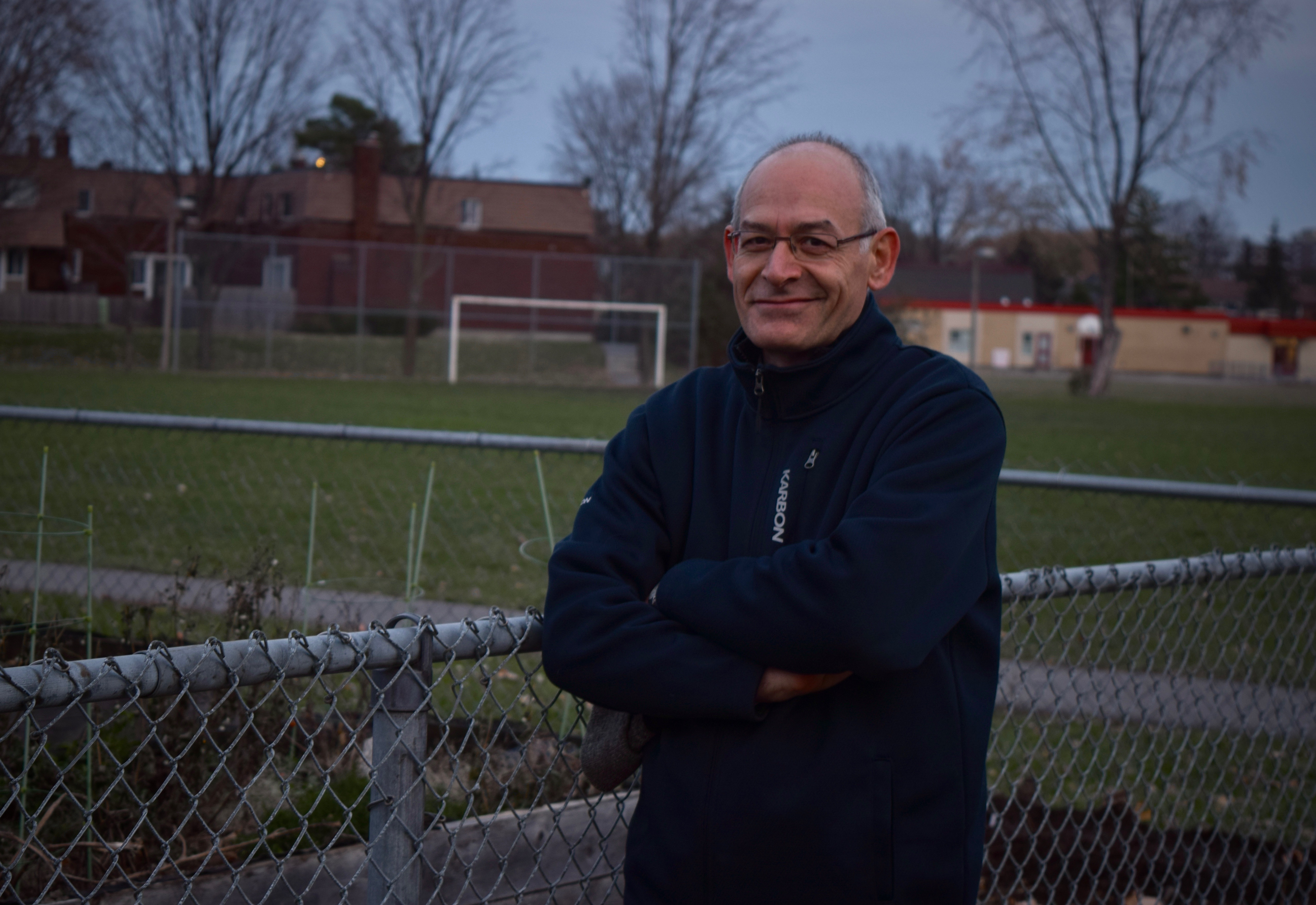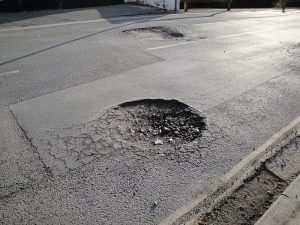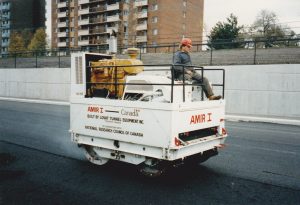Above: Laroche Park is the “backyard” for everyone in the Mechanicsville, according to community association president Lorrie Marlow (Photo by Isaac Würmann).
If there was a competition for the most contaminated green space in Ottawa, first prize might go to Laroche Park in Mechanicsville, a neighbourhood just west of the Bayview O-Train Station.
Lorrie Marlow has lived in the neighbourhood for 17 years, and is the president of the Mechanicsville Community Association. She says she’s heard stories about the park being contaminated since she moved to the area.
Marlow says she’s also seen the effect of contaminants in the soil. “It’ll turn the ice yellow in February,” she says, referring to the skating rink that’s located in the park.

Laroche Park is immediately adjacent to the National Capital Commission property at 80 Bayview Road, where there are five contaminated sites, according to an analysis of the federal contaminated sites inventory.
Those sites are just five of the 139 active federally-owned contaminated sites located across Ottawa.
Seventeen of those sites, including the five at 80 Bayview Road, are listed as “high priority” in the inventory. This means they are classified as being the “highest-risk,” and are first in line to be eligible for funding through the federal contaminated sites action plan.
This interactive map displays federal contaminated sites in Ottawa. The sites on the map are colour coded, with red dots representing “high priority” sites, yellow dots representing “medium priority” sites and green dots representing “low priority sites.” Click on the dots to learn more about individual sites. Ottawa municipal ward boundaries have been superimposed on the map to put locations in context.
A spokesperson for Environment and Climate Change Canada says reasons why a federal site might be classified as “contaminated” include “storage-tank leaks, long-term use of industrial facilities, or accidents-such as spills.”
In most cases, they say contamination is the result of past activities that had environmental consequences that were not well understood at the time.
Today, each federal department, agency, or Crown corporation is responsible for operating in an environmentally sustainable manner and for cleaning up any contaminants on their sites, they say.
The majority of the contaminated sites in Ottawa are the responsibility of the NCC, which is responsible for 85 sites. By comparison, departments such as Public Service and Procurement and National Defence are responsible for 16 and 10 sites in the city, respectively.
A spokesperson for the NCC was not made available before the time of publication.
Although the phrase “contaminated sites” may worry some Ottawa residents, the majority of contaminants can be cleaned up, says Paul Van Geel, chair of the department of civil and environmental engineering at Carleton University.
In the case of a site such as Lebreton Flats, for example, Van Geel says they can simply use a “dig and dump” approach to isolate the contaminated material.
However, he says the type of contaminant plays an important factor when it comes to cleaning up these sites.
At sites in Ottawa, the most common contaminants are “petroleum hydrocarbons,” which include substances such as crude oil, gasoline and diesel.

The cleanup process at these sites can be relatively easy, Van Geel says.
“If those hydrocarbons were spilled a couple years ago, a lot of the more volatile and soluble carbons that are of most concern have probably left, because they can biodegrade and break down,” he says.
However, Van Geel says other contaminants such as halogenated hydrocarbons, which include substances such as chlorine, can be much more difficult to remediate.
Unlike petroleum hydrocarbons, he says halogenated hydrocarbons don’t break down as easily.

That’s bad news for residents of Mechanicsville, where halogenated hydrocarbons are the type of contaminant at four of the five sites next to Laroche Park.
“Our community has been really wanting a community garden,” Marlow says, adding that Laroche Park has been suggested as a location for years.
But Marlow knows better. She says she’s not letting anyone eat anything grown from the contaminated soil at Laroche Park until she knows it’s been cleaned up.







